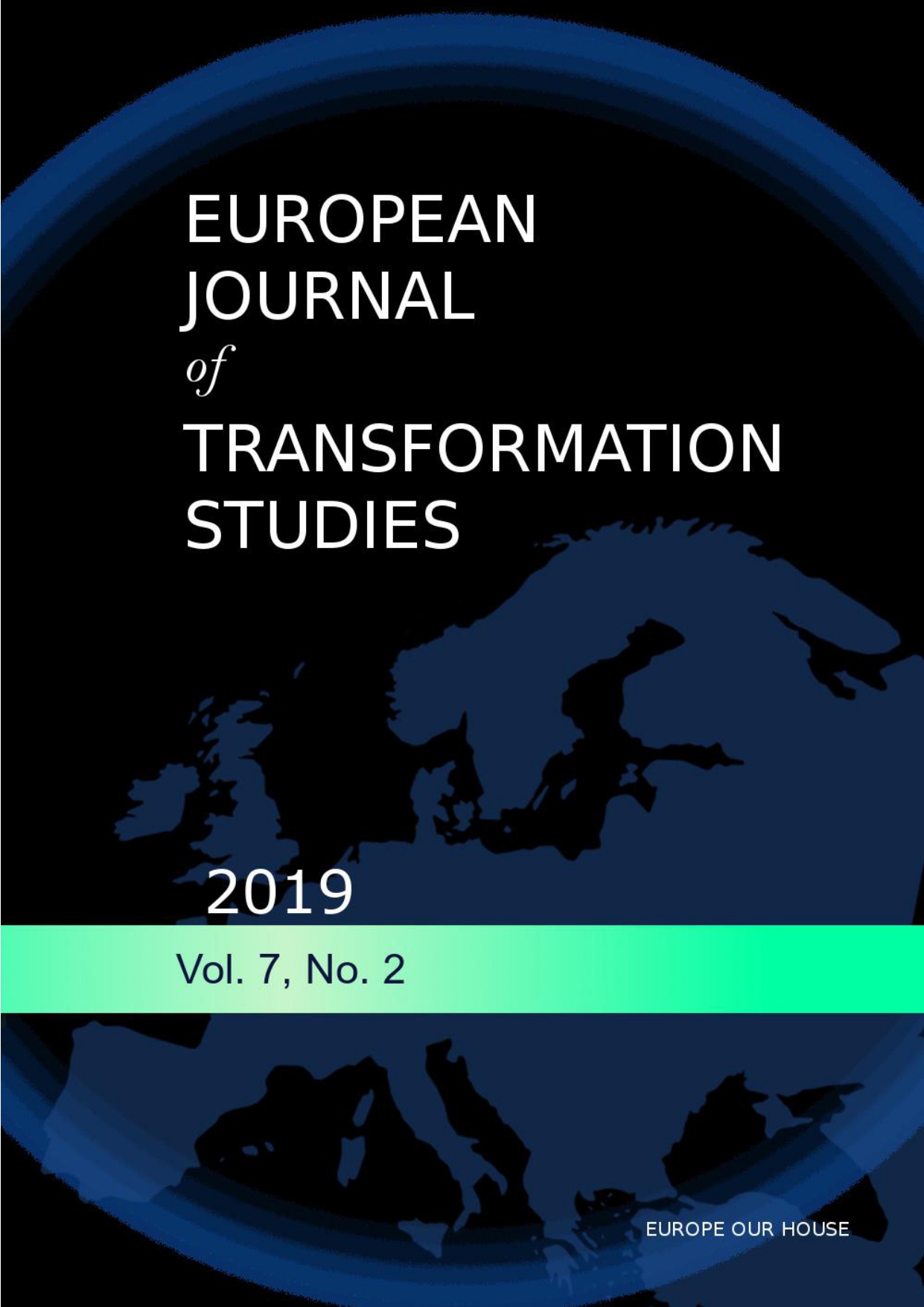On Human Identity in Cyberspace of Digital Media
Keywords:
real identity, virtual identity, cyberspace, digital media, cybersex, narcissism, media educationAbstract
Human identity is not static but dynamic. It depends on somatic and cognitive development, culture and society. Human identity is now extending to cyberspace of digital media. According to Turkle, cyberspace acts as a mirror in which one can get to know one another. However, virtual identity is not entirely virtual because it is continually linked to real identity through cognitive functions and abilities. The author focuses on two risks of expanding identity in cyberspace of digital media, which are cybersex and narcissism. Narcissism and cybersex are two risks that currently endanger especially children and adolescents. Therefore society should pay particular attention to education. Media education, with special emphasis on critical thinking, is a necessity.
Downloads
References
Aboujaoude, E., (2011), Virtually you. The Dangerous Powers of the E-Personality. New York: W. W. Norton. 351 p. ISBN 978-0-393-07064-4.
Bystřický, J. at al. (2008), Média, komunikace a kultura. Plzeň: Aleš Čeněk. 96 s. ISBN 978-80-7380-117-5.
Carr, N., (2011), The Bookless Library, pp. 1 – 3. In Brockman, J. (ed.): Is the Internet Changing the Way you Think? The Net´s Impact on Our Minds and Future. New York, London, Toronto, Sydney, New Delhi, Auckland: Harper Perennial. 408 p. ISBN 978-0-0-202044-4.
Divínová, R., (2005), Cybersex, jeho přitažlivost a specifika. [online], [2016-09-21]. Available on: <http://systemic.cz/sex/archive/cze/textbook2005/divinova.pdf>.
Eakin, P. J., (2015), Self and Self-Representation Online and Off. In Frame, No. 28, pp. 11 – 29. Available on: <http://www.indiana.edu/~engweb/faculty/eakin_self_and_self_rep.pdf>.
Eriksen, T. H., (2009), Tyranie okamžiku. Brno: Doplněk. 168 s. ISBN 978-80-7239-238-4.
Gálik, S. & Gáliková Tolnaiová, S., (2015), Influence of the internet on the cognitive abilities of man. Phenomenological and hermeneutical approach. In Communication Today. Vol. 6, No. 1, pp. 4-15.
Gálik, S., (2017), Influence of cyberspace on changes in contemporary education. In Communication Today. Vol. 8, No. 1, pp. 30- 38.
Gáliková Tolnaiová, S., (2019), Media and truth in the perspective of the practice and life form of the modern “homo medialis”. In Communication Today. Vol. 10, No. 1, pp. 4- 19.
Goodman, N., (2007), Jazyky umění. Nástin teorie symbolů. Praha: Academia. 213 s. ISBN 978-80-2001-1519-8.
Heim, M., (1993), The erotic ontology of cyberspace by Michael Heim. Chapter 7 of The Metaphysics of Virtual Reality. Oxford: University Press [online], [2016-09-21]. Available on: <http://project.cyberpunk.ru/idb/erotic_ontology_of_cyberspace.html>.
Jansz, J. & Martis, R. G., (2007), The Lara Phenomenon: Powerful Female Characters in Video Games. In Sex Roles, Vol. 56, Issue 3, pp. 141–148.
Lasch, Ch., (2016), Kultura narcizmu. Americký život ve věku snižujúcich se očekávání. Praha: Triton. 304 s. ISBN 978-80-7553-000-4.
Leidlmair, K., (1999), From the philosophy of technology to a theory of media. In PHIL & TECH, Vol 4, No. 3. [online], [2015-1-26]. Available on: <http://scholar.lib.vt.edu/ejournals/SPT/v4_n3html/LEIDLMAI.html>.
Lipovetsky, G., (2008), Éra prázdnoty. Úvahy o současném individualismu. Praha: Prostor. 358 s. ISBN 978-80-7260-190-5.
Lohisse, J., (2003), Komunikační systémy. Socioantropologický pohled. Praha: Karolinum. 198 s. ISBN 80-246-0301-2.
Lyon, J. A., (1988), Problems of Personal Identity. In Encyclopaedia of Philosophy. London: Rouletdge, pp. 441–462.
Martinengo, A., (2013), From the Linguistic Turn to the Pictorial Turn — Hermeneutics Facing the ‘Third Copernican Revolution’. Proceedings of the European Society for Aesthetics. Vol. 5, pp. 302–312.
Modrzejewski, A., (2016), The personalistic aspect of truth and dialogue in the context of Karol Wojtyła’s philosophy: John Paul II’s ethics of media. In Communication Today. Vol. 7, No. 1, pp. 4–16.
Olson, E. T., (2009), Self: Personal Identity. In W. Banks (ed.), Encyclopedia of Consciousness. Elsevier. pp. 301-312.
Postman, N., (2010), Ubavit se k smrti. Veřejná komunikace ve věku zábavy. Praha: Mladá fronta. 208 s. ISBN 978-80-204-2206-4.
Petranová, D., (2011), Does Media Education At Schools Develop Student´s Critical Competences? In Communication Today. Vol. 2, No. 1, pp. 66 – 83.
Petranová, D. & Burianová, Ľ., (2014), Potential of digital technologies use in the formal preprimary education. In European Journal of Science and Theology. Vol 10, Suppl. 1, pp. 263-276.
Sartori, G., (1997), Homo videns: La sociedad teledirigada. [online], [2016-09-21]. Available on: <http://ifdc6m.juj.infd.edu.ar/aula/archivos/repositorio/0/116/HOMO_VIDENS.pdf>.
Solík, M., (2014), Semiotic approach to analysing of advertising. In European Journal of Science and Theology. Vol 10, Suppl. 1, pp. 207 – 217.
Sonesson, G., (1989), Semiotics of Photography – On Tracing the Index. Lund University. Available on: <http://faculty.georgetown.edu/irvinem/theory/SonessonSemiotics_of_Photography.pdf>.
Spitzer, M., (2014), Digitální demence. Jak pŕipravujeme sami sebe a naše děti o rozum. Brno: Host. 343 s. ISBN 978-80-7294-872-7.
Stevens, A., (1996), Jung. Praha: Argo. 176 s. ISBN 80-7203-012-3.
Turkle, Sh., (1999), Cyberspace and Identity. In Contemporary Sociology. Vol. 28, No. 6, pp. 643–648.
Turkle, Sh., (2005), The Second Life. Computers and the Human Spirit. Cambridge: The MIT Press. 372 p. ISBN 978-0-262-70111-2.
Vallikatt, J., (2014), Virtually Religious: Myth, Ritual and Community in World of Warcraft. Melbourne: RMIT University, p. 245. Available on: <https://researchbank.rmit.edu.au/eserv/rmit:160839/Vallikatt.pdf>.
Wilber, K., (2006), Introduction to the Integral Approach. [online], [2016-09-21]. Available on: <http://www.kenwilber.com/Writings/PDF/IntroductiontotheIntegralApproach_GENERAL_2005_NN.pdf>.
Wittgenstein, L., (1993), Tractatus logico-philosophicus. Praha: OIKOYMENH. 88 s. ISBN 80- 85241-30-7.

 Academic Scientific Journals
Academic Scientific Journals



